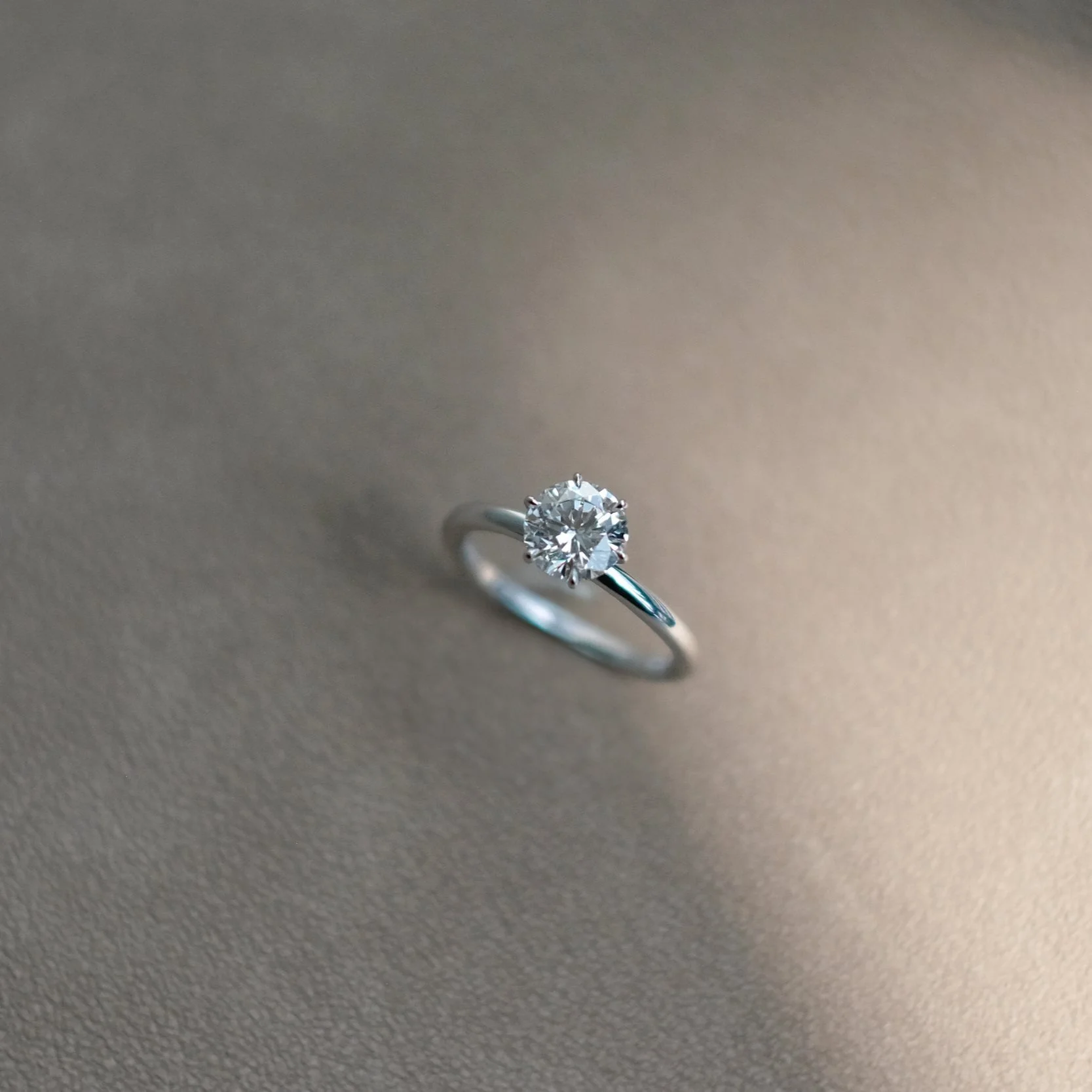
Diamond type
Natural Diamonds
Natural diamonds are formed deep within the Earth when carbon atoms undergo intense heat and pressure, resulting in rough diamonds.
Lab-Grown Diamonds
Lab-grown diamonds are created in laboratories using identical conditions to those found beneath the Earth's surface. Both types of diamonds share the same chemical, physical, and optical properties, making them indistinguishable to the naked eye. The only discernible difference lies in their origin, requiring specialized equipment to differentiate between them.
The Diamonds 4Cs
The 4Cs, which refer to cut, colour, clarity and carat, are universally recognized standards for evaluating the quality of a diamond. The overall quality of a diamond is determined by considering the combination of these four factors.
Colour
Diamonds come in a wide range of colours and most white diamonds have a slight yellow tint. In the range from colourless to light yellow or light brown, the closer a diamond is to being “colourless”, the higher its value and price tend to be.
The GIA’s D-Z scale is widely accepted as the industry standard for grading the colour of diamonds. This scale ranges from D (completely colourless) to Z (having a light yellow hue).
Clarity
Diamonds can possess internal characteristics called inclusions and external characteristics known as blemishes. The clarity of a diamond is determined by the presence and visibility of these features. The higher the clarity grade, the fewer inclusions are present, resulting in a clearer appearance. Diamonds without inclusions or blemishes are rare; however, most characteristics can only be seen with magnification. The GIA grading scale rates diamonds from Flawless (FL) to Included (I).
Cut
Diamond cut refers to how well the diamond’s facets interact with light, the proportions of the diamond, and the finishing details. It plays a significant role in a diamond's overall beauty, as it directly affects its ability to sparkle and its overall visual appeal. GIA grades diamond cut on the scale of Ideal, Excellent, Very Good, Good, Fair and Poor.
Diamonds can be cut into different shapes, below are the most common ones:
Round Brilliant Cut
-This is the most popular and classic diamond cut. When well-polished, diamonds with this cut exhibit excellent sparkle, brilliance, and fire.
Oval Cut
-Ovals can look larger than round diamonds of equal weight. They are good alternatives to round diamonds, providing a balance between traditional elegance and a touch of uniqueness.
Emerald Cut
-Emerald cut is defined by its rectangular facets and beveled corners. It’s simple yet bold and geometric symmetry emphasize the transparency of the diamond.
Carat
Diamond weights are expressed in metric carats, abbreviated as "cts." One carat is equal to one-fifth (0.200) of a gram. Fractions of a carat can significantly impact the price, ranging from hundreds to thousands of dollars, depending on the quality of the gem.




